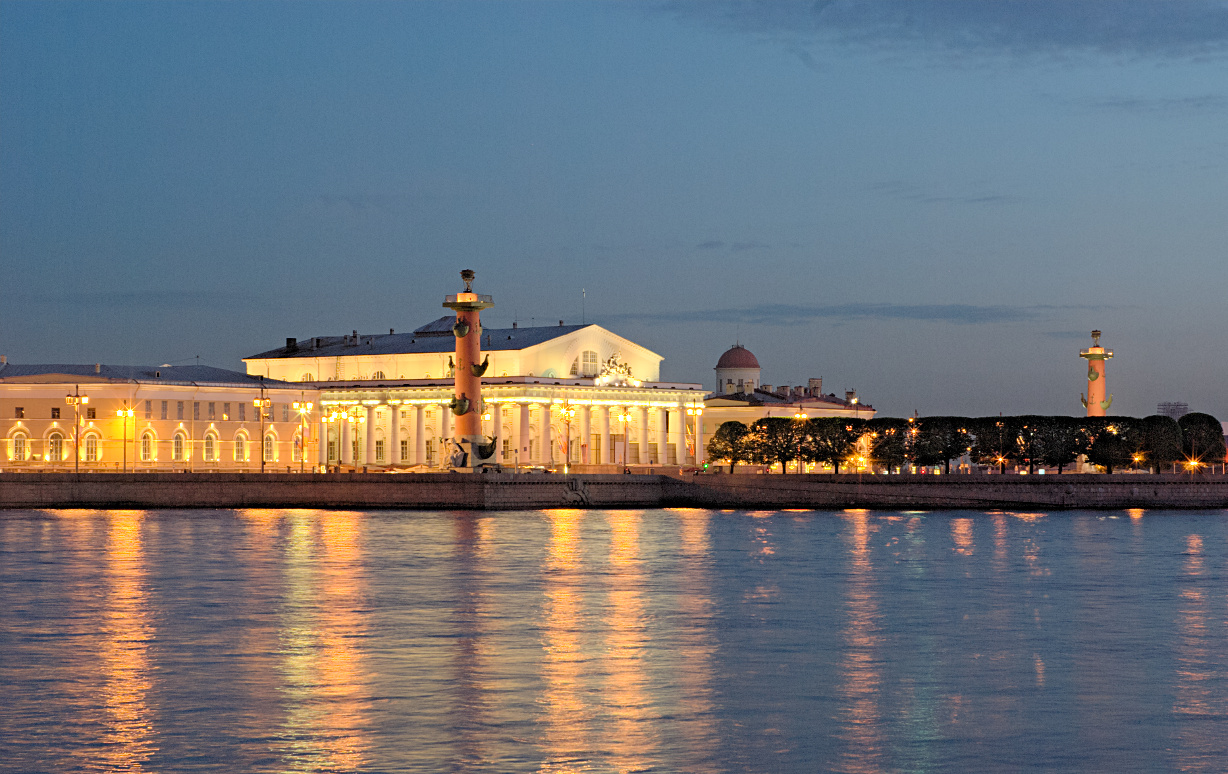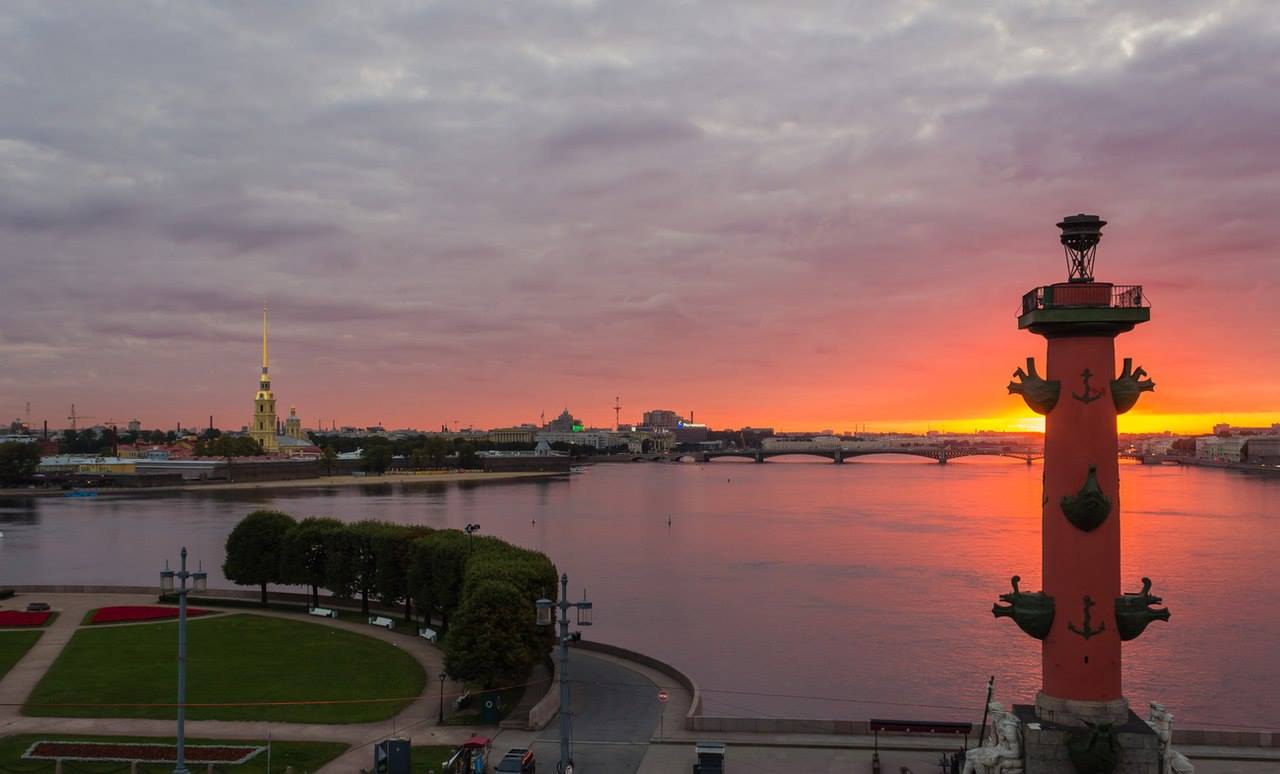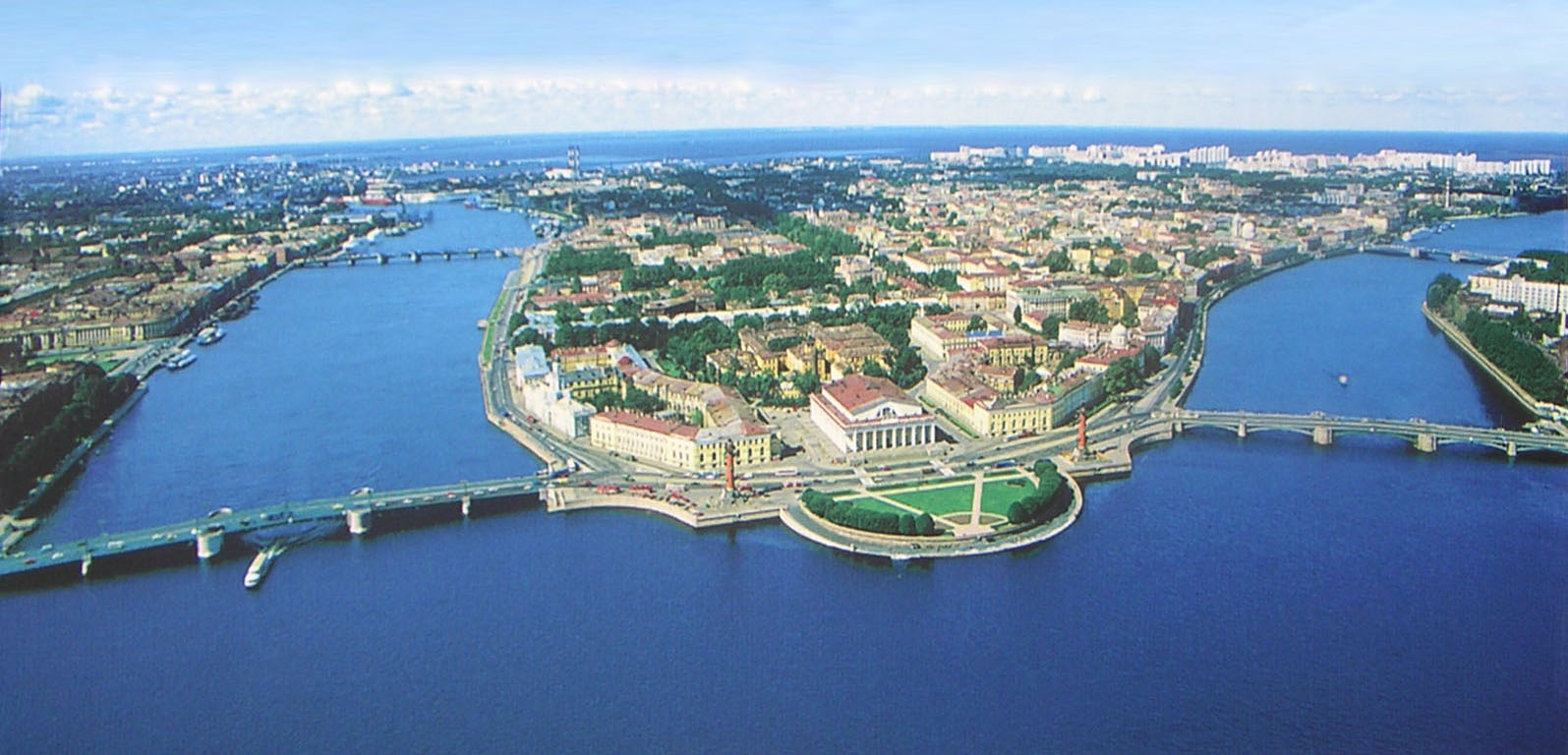Vasilyevsky Island is an island in St. Petersburg, Russia, bordered by the Bolshaya Neva and Malaya Neva Rivers (in the delta of the Neva River) in the south and northeast, and by the Gulf of Finland in the west. Vasilyevsky Island is separated from Dekabristov Island by the Smolenka River. Together they form the territory of Vasileostrovsky District, an administrative division of Saint Petersburg.
Situated just across the river from the Winter Palace, it constitutes a large portion of the city's historic center. Two of the most famous St. Petersburg bridges, Palace Bridge and Blagoveshchensky Bridge, connect it with the mainland to the south. The Exchange Bridge and Tuchkov Bridge across the Malaya Neva connect it with Petrogradsky Island. Vasilyevsky Island is served by Vasileostrovskaya and Primorskaya stations of Saint Petersburg Metro (Line 3 Spb metro line3.svg). There are also tramway lines.
Speakers of Russian understand the name of the island as a possessive adjective made of the Russian masculine personal name Vasily (Basil), or possibly of the family name Vasilyev (derived from "Vasily").
There are various versions of who the original Vasily was, though these may be a product of false etymology, as the Russian name of the island may in fact be a corruption of its previous Swedish or Finnish name, because the island had been shown under them on Swedish maps before its present Russian history began after the Great Northern War.
First Russian record of the island, and under virtually its modern name, is found in a registry book of 1500 land survey (Pistsovaya kniga) of Votes' Pyatina (Vodskaya Pyatina) of Novgorod Republic.
It makes less probable another, a later one, Vassily-related etymology dating back to the 18th century. It is connected, like many other city legends, with the person of the founder of the present-day city, Peter the Great. One of his foremost gunner officers and military engineers, some Vassily Korchmin, had his artillery battery to ward off the Swedish navy at the spit of the island and got the tsar's letters addressed "To Vassily in the Island", thus making it another possible cause of the island's name. The man was commemorated by a lively statue in a pedestrian street in the island (see photo). Finnish etymology may lead to a corrupted compound word Vasikkasaari, Calf Island. Another known Finnish name of the island was Hirvisaari - Elk (Moose) Island.












